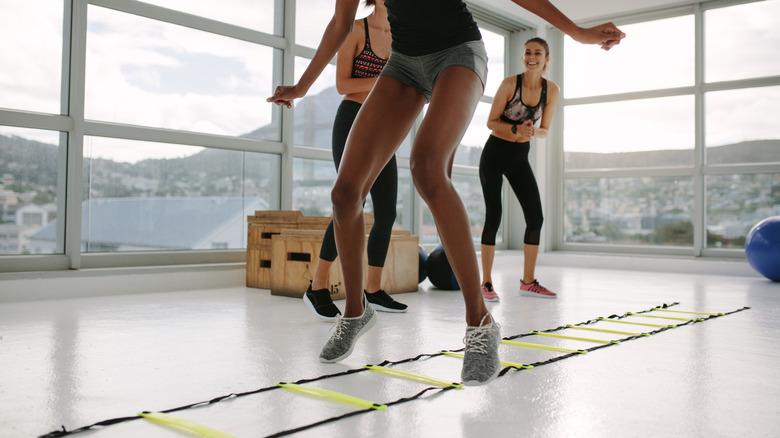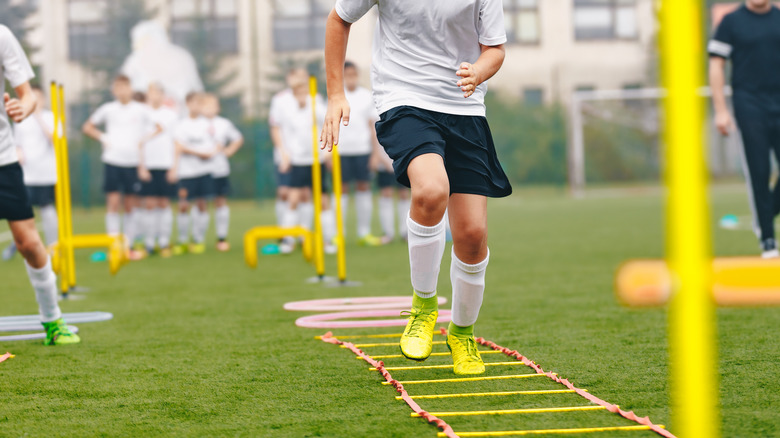The Real Health Benefits Of Using An Agility Ladder
Agility ladders have been making a name for themselves in the fitness world. Also known as workout ladders or ladders, this equipment is a staple for building agility and speed. Verywell Fit points out that agility ladders were typically used in SARQ training (i.e. speed, agility, reactivity, and quickness) for professional athletes and military training. However, word got out about the benefits of a ladder workout, and now this equipment can be found almost anywhere, like gyms and physical therapy offices.
Incorporating ladder drills into your workout can improve your overall athletic performance (per Orthopedic One). Small and quick movements moving up the ladder increase one's ability to move in one direction, change directions, speed up, slow down, and improve one's swiftness in changing position.
Not only does it help movement skills, but it increases body awareness and can reduce the risk of certain injuries (per ACE Fitness). This is because the repetition trains your muscle to quickly shorten and lengthen.
Lastly, because ladders test your speed, it naturally gets the blood pumping. So you can expect to burn a lot of calories since it involves cardio, which also supports cardiovascular health (via Orthopedic One).
How to use an agility ladder
Before you start training on an agility ladder, it's always best to consult with your physician first and make sure you're in good health. Once your doctor gives you the green light, start by laying the ladder out on a flat area with plenty of room surrounding it. Verywell Fit recommends starting off slow, knees bent, hips-hinge slightly, with your shoulders and arms relaxed.
Next, you'll want to decide how many repetitions and sets you'll be performing for each drill. For beginners, start with no more than two to four sets of three to five repetitions (via Masterclass). Place your feet shoulder-width apart, then naturally move through the workout ladder. Keep in mind your core should be engaged, and your arms should be active but relaxed, matching the speed of your feet. Focus first on proper technique, then gradually increase your speed once you feel comfortable.
Two of the most common agility drills are single-foot and two-foot drills (per Verywell Fit). As the names suggest, single-foot drills have one foot in the square at a time, whereas the two-foot drills can have two feet in the square at a time. Other drills Orthopedic One recommends include a hip switch, hop scotch, or zig-zag hops.


